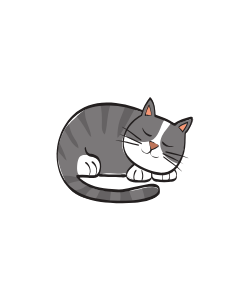What to Do If Your Cat Stops Eating or Pooping After a Hairball
Posted on: 20 May 2020
Hairballs are a fairly common sight for many pet owners, but that doesn't mean that having a hairball is natural or healthy. If your cat has recently produced a hairball and hasn't been eating or defecating in the litter box since, there's likely a big problem brewing. Here's what you should know about it.
What May Be Happening
Hairballs are a cat's way of trying to eject a hair blockage that's developed somewhere in their intestines. Although cats groom themselves and sometimes others, their bodies aren't capable of digesting hair. So when enough of it is eaten, it has nowhere to go but out, and it often comes up instead of going down.
If a cat isn't eating or pooping after producing a hairball, it's likely a bad sign. This may indicate that the hairball broke off of a larger one that is still present in the intestines.
Why It's Dangerous
Although it might seem hard to believe, hairballs can actually be deadly. If a hairball turns into a blockage in the intestines, it will prevent your cat from being able to digest their food. Depending on the location of the blockage, this may mean that they stop eating, stop pooping, or both.
Unfortunately, once a large blockage develops it almost never resolves itself. While it might be shocking, it is possible for cats to die of this condition if they don't receive medical help.
What to Do
If your cat is in this situation, you need to get to an animal hospital immediately. The longer you wait, the more likely that your cat will become critically ill.
Your veterinarian will physically examine your cat and will use scans to determine where the blockage is in the body. This may include ultrasounds or even an MRI. Once the blockage is discovered, it can be surgically removed.
The good news here is that most cats who have hair blockages surgically removed recover beautifully. However, this procedure does have significant recovery time, as the intestines will have to heal, as well as the flesh covering them. As a result, your cat will likely need to be hospitalized for some time.
Once your cat comes home, you'll need to take steps to ensure this doesn't happen again. Groom your cat regularly to remove loose, excess hair, and consider giving them treats or medication designed to help prevent hairballs from forming. With these tips, your kitty shouldn't have to face this problem again. If you have further questions, contact an animal care hospital.
Share
